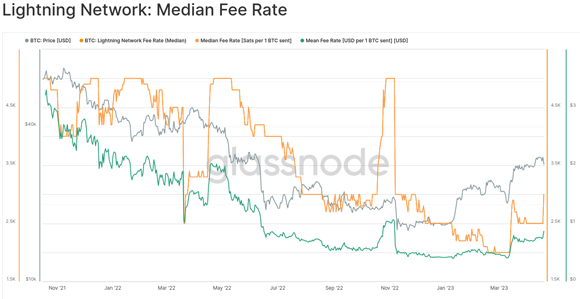As I showed yesterday, I’ve been doing some digging into US earnings calls.
This quarter, more than most in recent history, has been a fascinating one. It’s a quarter in which we’ve seen a lot of big names, particularly in tech, undergo hefty cost-cutting pivots.
The market seems to have liked what they’ve done too. Big tech stocks have been soaring this week in the wake of better-than-expected growth. Whether that sentiment is sustainable is unclear, but it has made for interesting times for investors…
But I don’t want to talk about tech today.
Instead, I want to talk about Visa.
Because you see, like big tech, Visa is in a bit of an arms race. Where companies like Microsoft, Meta, and Google are racing to pioneer AI, Visa is seemingly in a race to stay relevant.
It seems clear to me that the payment processor and credit card issuer is worried about bitcoin. So much so, they’re actively trying to catch up with their own crypto project.
Here’s what Visa’s ‘head of crypto’ had to say on Twitter this week:
|
|
| Source: Twitter |
Lightning strikes
The mainstream, of course, hasn’t given much mind to this little sideshow.
Few people see Bitcoin [BTC] or crypto as an immediate threat to banks or payments processors right now. After all, they’re still a very volatile and speculative asset class.
But, despite these constant surface-level criticisms, bitcoin continues to improve behind the scenes. In fact, one of the most exciting upgrades to the network and its blockchain, the Lightning Network, is beginning to really demonstrate its potential.
If you’re unfamiliar with the Lightning Network, it’s known as a layer-two protocol. It’s built on top of the bitcoin blockchain to deliver near instantaneous transactions at a fraction of the cost of the usual payment processors.
For example, most credit card providers, like Visa, charge businesses a 1–3% fee on each transaction. It sounds like a small amount, but it adds up over time.
By comparison, with the help of the Lightning Network, bitcoin could facilitate the same transaction for a fraction of the cost. Here’s a chart showing the median fee rate of bitcoin in recent months:
|
|
| Source: Glassnode/Cointelegraph |
What I want you to focus on is the green line, which represents the average cost of a Lightning bitcoin transaction in USD. Not only is this cost falling over time, but it’s also currently sitting just under one US dollar for an entire bitcoin.
In other words, if you wanted to send someone US$29,500 worth of bitcoin (the current value of one whole bitcoin), it would set you back a little less than US$1. In direct contrast, if that same transaction was made by a payment processor like Visa, and we assume it carried a 1% fee, it would cost US$295!
You can now see why Visa is desperate to roll out its own crypto solution…
Real-world revolution
To the cynics and sceptics, this data is simply seen as irrelevant. They’re happy to fall back on the argument that bitcoin is not stable enough for use in the real world.
But they’re wrong.
Earlier this month, a group of bitcoin enthusiasts in Brazil put together an event called ‘Bitcoin Beach’, a simple meet up in the tropical town of Jericoacoara between locals, business owners, and crypto tourists.
As a result, they set a new world record for Lightning Network transactions. In the span of just over three-and-a-half minutes, participants conducted 71 transactions. Here’s what the Bitcoin Beach creator, Fernando Motolese, had to say about the achievement:
‘This was only possible because the Lightning Network is ready for the masses,
‘Right now, there is no other option that is as prepared for this kind of market with a functional solution as Lightning. It is superior to Visa.’
Now, to be clear, transaction volume is the big challenge for bitcoin right now. While this world record is a great sign, it is still nowhere close to the roughly 1,700 transaction per second that Visa typically handles.
The point, though, is that bitcoin is still scaling. Not just in volume or speed either, but also the value of its fees. Because while the Lightning Network certainly still has its own limitations, cost is not one of them, as explained before.
So, what does that mean for investors like yourself?
Well, as my colleague Ryan Dinse bluntly told his subscribers earlier this year:
‘If bitcoin “the network” turns out to be the rails for international capital flows — simply because it’s better — the value of bitcoin must rise with it.’
It’s just that simple.
And it’s why I think we’re already starting to see that rise underway.
Regards,
 |
Ryan Clarkson-Ledward,
Editor, Money Morning



